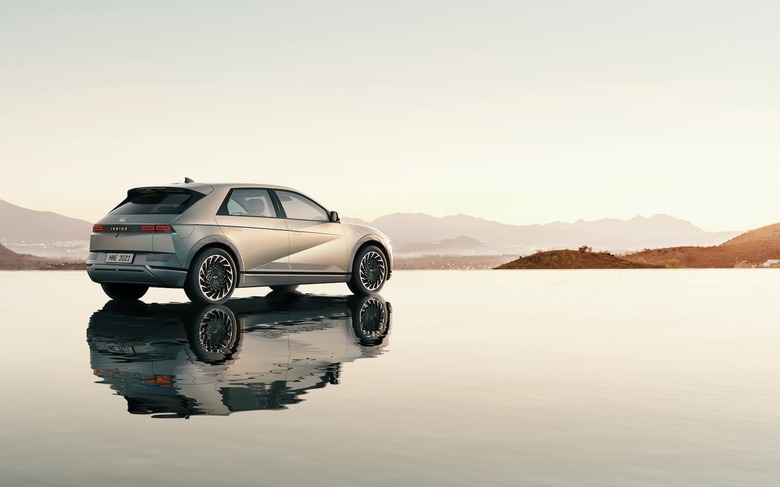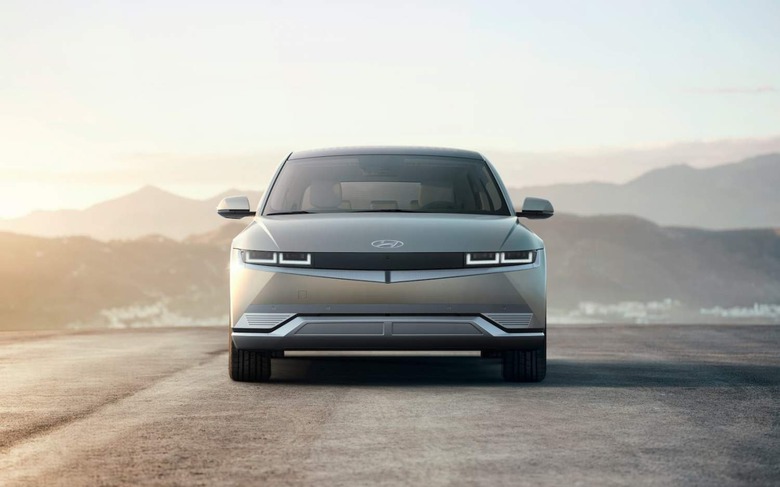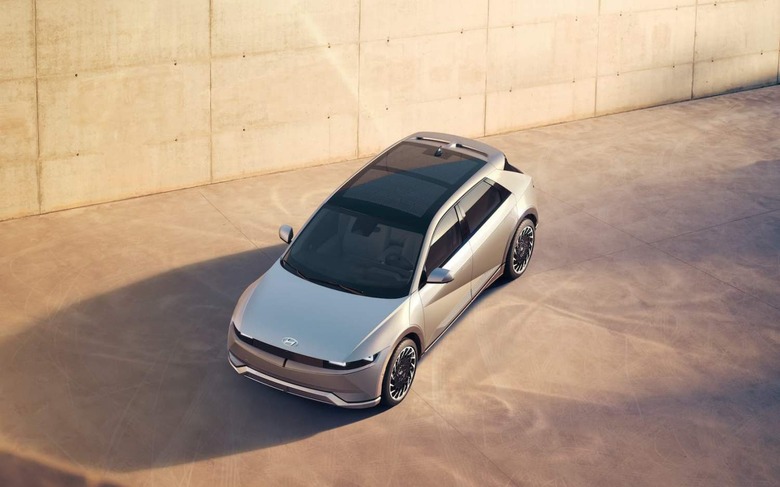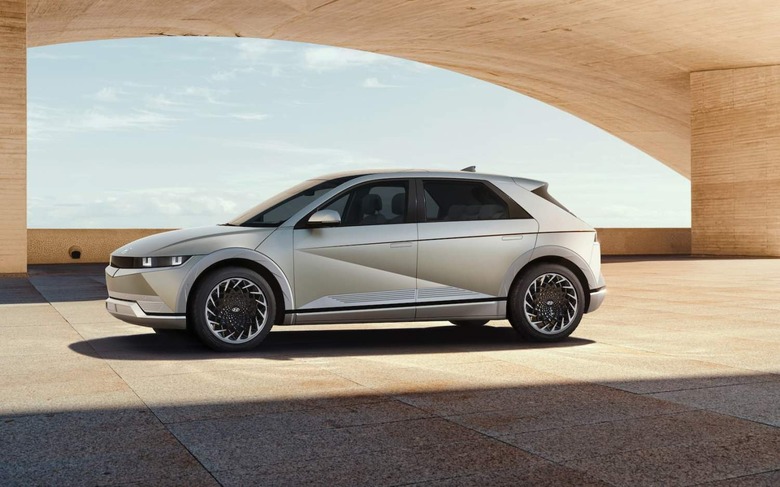The Hyundai Ioniq 5's Cleverest Trick Happens When The EV Is Standing Still
The 2021 Hyundai Ioniq 5 may be the automaker's most dramatic – and appealing – production EV so far, but it's the technology the automaker is pushing for when the electric hatchback is standing still that gives a taste of what's to come. Announced earlier this week, the Ioniq 5 adopts a distinctly retro-futuristic aesthetic with its sharp creases and segmented LED lights.
At the front, the squared-off headlamps squint out from under a frowning hood edge. EVs often do away with a traditional grille – since the cooling needs are in different areas to those of internal combustion vehicles – but Hyundai has still applied one for design reasons, and with great result.
Cleanly fared-in bumpers and that sharp Z-shaped zigzag side crease lead around to a tapering hatchback rear. There, the rectangular light graphic makes another appearance, but without looking like there's been a compromise in practicality with the tailgate opening. Factor in wheels that luxe sibling Genesis could be proud of, and you have a real looker of an EV.

According to Hyundai, we can expect a 72.6 kWh battery and either front-wheel drive or all-wheel drive for the US-spec Ioniq 5. 350 kW DC fast charging means a 5-percent to 80-percent top-up in under 20 minutes, assuming you can find a sufficiently-speedy charger. In the AWD version, with 302 horsepower and 446 lb-ft of torque, figure on 0-60 mph in 5.2 seconds.

The general response to how the Ioniq 5 looks and its performance numbers have been positive, but Hyundai is pushing the functionality you use when it's standing still just as aggressively. V2L – or Vehicle to Load – basically allows you to use the Ioniq 5 as a huge mobile battery pack. Think along the lines of a Tesla Powerwall on wheels.
There are two power outlets in the Ioniq 5. One is in the rear, under the second-row seats; it's active whenever the EV is switched on. A second is located alongside the charging port on the outside, and it's capable of supply power even if the car is off. A converter, Hyundai says, can be used for running high-power electronic equipment off that port.

Relying on an EV as a mobile source of power isn't new. We've already seen experiments with V2G – Vehicle to Grid – where electric cars act as temporary storage for times of low-cost excess power in the grid, and then feed it back when rates would typically be higher. The Plug & Charge standard beginning to get more commonplace among EV chargers also includes bidirectional charging elements alongside its zero-login session management.
Still, it's not exactly a well-known feature at present, though that could change in the near future. The outages in Texas already this year, along with sky-rocketing costs as gas and electricity demand surged far beyond predicted levels, have demonstrated just what an impact climate change could have on utilities. Even if the grid is up to the task, natural perils like forest fires can still force a switch-off, as California has discovered over several seasons.
Home backup generators, which typically run on natural gas, are available but can be expensive, both to install and – depending on prices when you need that power – to run. Meanwhile home batteries, like those from Tesla and others, are increasingly capacious and can store power from solar, but are still expensive. If you don't have solar panels, meanwhile – or you have the wrong sort of system installed – then once the home batteries run down you're left out of power.

If your home battery is part of an EV, however, you could in theory drive to a charger and top up. That does, of course, rely on chargers themselves having power still, and it would leave the home offline while you were away charging, but a smaller fixed battery could potentially take up the slack during that shorter period.
For now, that sort of V2L application is beyond what Hyundai is explicitly talking about with the Ioniq 5. Its focus has been more on charging things like laptops and electric scooters, or running useful appliances while camping. Those sort of applications are probably going to be more readily understood to a mass market audience still learning to see an EV as more than just a car which happens to run on electricity.

Hyundai will explain more on that front as we get closer to the 2022 Ioniq 5's arrival in US dealerships this fall. Down the line, though, it seems increasingly likely that the concept of an electric car using its power simply to drive around will be considered short-sighted. That's only going to be accelerated as we see more examples of just how fragile the grid we rely on every day can be.
